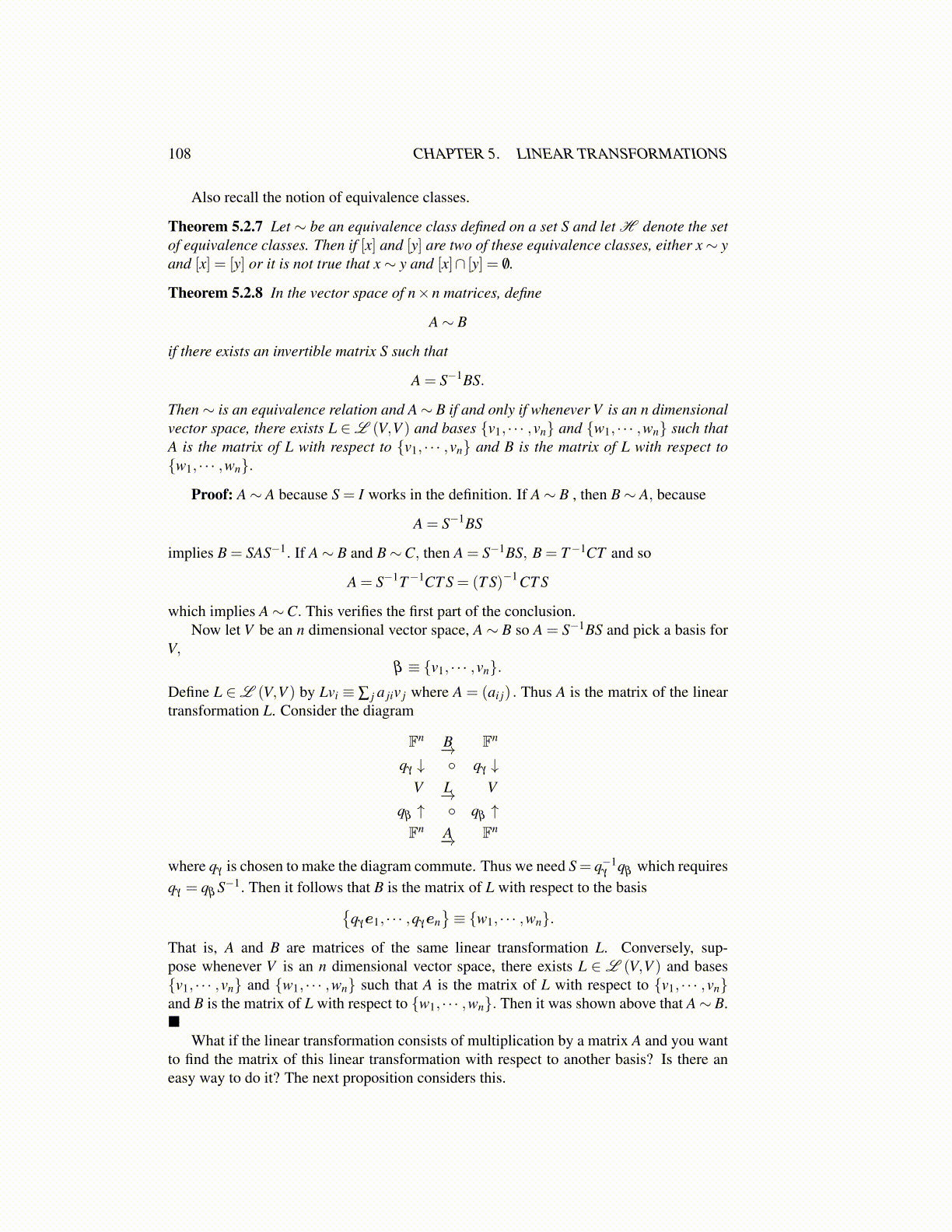
108 CHAPTER 5. LINEAR TRANSFORMATIONS
Also recall the notion of equivalence classes.
Theorem 5.2.7 Let ∼ be an equivalence class defined on a set S and let H denote the setof equivalence classes. Then if [x] and [y] are two of these equivalence classes, either x∼ yand [x] = [y] or it is not true that x∼ y and [x]∩ [y] = /0.
Theorem 5.2.8 In the vector space of n×n matrices, define
A∼ B
if there exists an invertible matrix S such that
A = S−1BS.
Then ∼ is an equivalence relation and A∼ B if and only if whenever V is an n dimensionalvector space, there exists L ∈L (V,V ) and bases {v1, · · · ,vn} and {w1, · · · ,wn} such thatA is the matrix of L with respect to {v1, · · · ,vn} and B is the matrix of L with respect to{w1, · · · ,wn}.
Proof: A∼ A because S = I works in the definition. If A∼ B , then B∼ A, because
A = S−1BS
implies B = SAS−1. If A∼ B and B∼C, then A = S−1BS, B = T−1CT and so
A = S−1T−1CT S = (T S)−1 CT S
which implies A∼C. This verifies the first part of the conclusion.Now let V be an n dimensional vector space, A∼ B so A = S−1BS and pick a basis for
V,β ≡ {v1, · · · ,vn}.
Define L ∈L (V,V ) by Lvi ≡ ∑ j a jiv j where A = (ai j) . Thus A is the matrix of the lineartransformation L. Consider the diagram
Fn B−→ Fn
qγ ↓ ◦ qγ ↓V L−→ V
qβ ↑ ◦ qβ ↑Fn A−→ Fn
where qγ is chosen to make the diagram commute. Thus we need S = q−1γ qβ which requires
qγ = qβ S−1. Then it follows that B is the matrix of L with respect to the basis{qγe1, · · · ,qγen
}≡ {w1, · · · ,wn}.
That is, A and B are matrices of the same linear transformation L. Conversely, sup-pose whenever V is an n dimensional vector space, there exists L ∈ L (V,V ) and bases{v1, · · · ,vn} and {w1, · · · ,wn} such that A is the matrix of L with respect to {v1, · · · ,vn}and B is the matrix of L with respect to {w1, · · · ,wn}. Then it was shown above that A∼ B.■
What if the linear transformation consists of multiplication by a matrix A and you wantto find the matrix of this linear transformation with respect to another basis? Is there aneasy way to do it? The next proposition considers this.